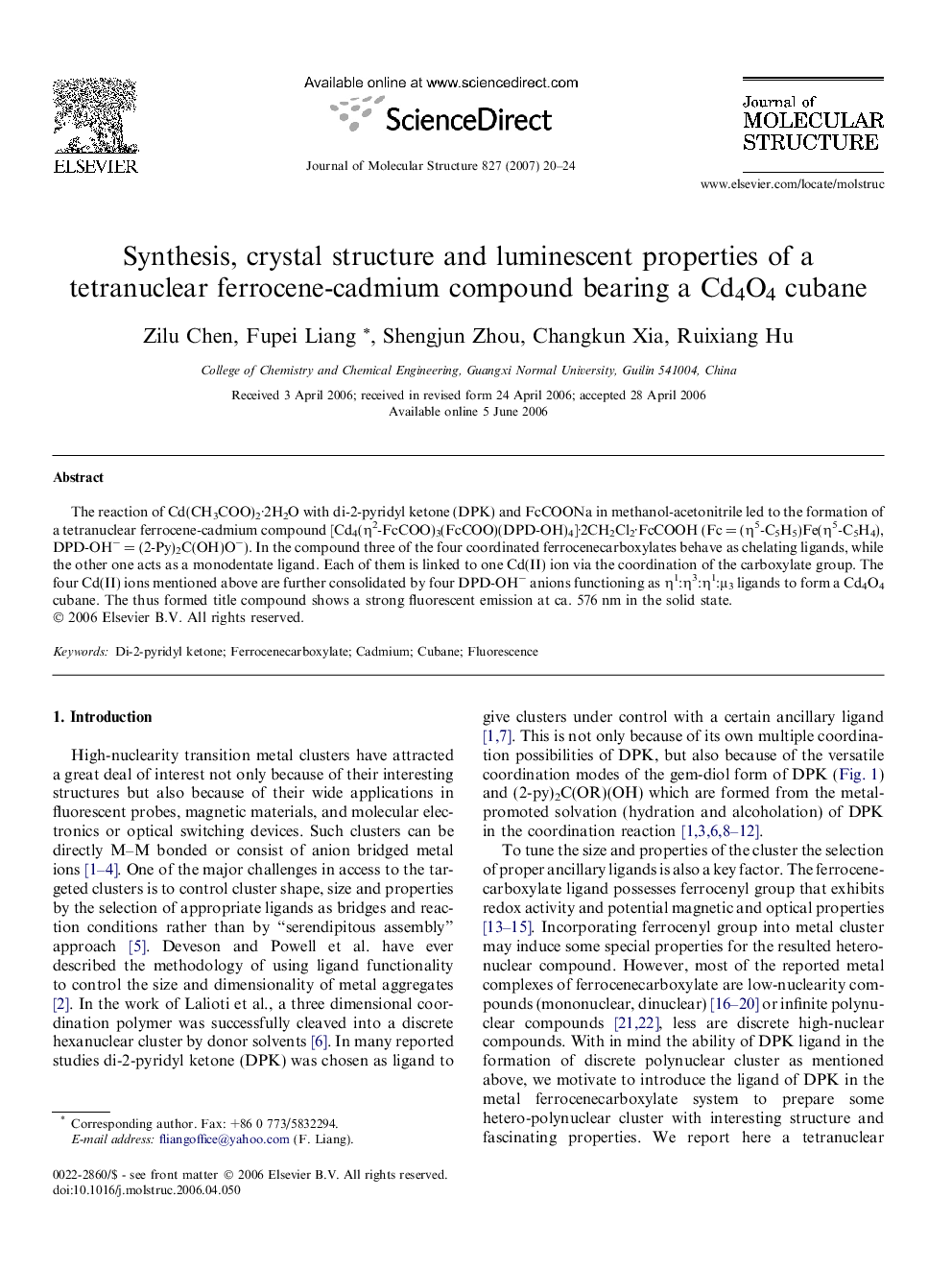| Article ID | Journal | Published Year | Pages | File Type |
|---|---|---|---|---|
| 1411917 | Journal of Molecular Structure | 2007 | 5 Pages |
Abstract
The reaction of Cd(CH3COO)2·2H2O with di-2-pyridyl ketone (DPK) and FcCOONa in methanol-acetonitrile led to the formation of a tetranuclear ferrocene-cadmium compound [Cd4(η2-FcCOO)3(FcCOO)(DPD-OH)4]·2CH2Cl2·FcCOOH (Fc = (η5-C5H5)Fe(η5-C5H4), DPD-OHâ = (2-Py)2C(OH)Oâ). In the compound three of the four coordinated ferrocenecarboxylates behave as chelating ligands, while the other one acts as a monodentate ligand. Each of them is linked to one Cd(II) ion via the coordination of the carboxylate group. The four Cd(II) ions mentioned above are further consolidated by four DPD-OHâ anions functioning as η1:η3:η1:μ3 ligands to form a Cd4O4 cubane. The thus formed title compound shows a strong fluorescent emission at ca. 576 nm in the solid state.
Related Topics
Physical Sciences and Engineering
Chemistry
Organic Chemistry
Authors
Zilu Chen, Fupei Liang, Shengjun Zhou, Changkun Xia, Ruixiang Hu,
